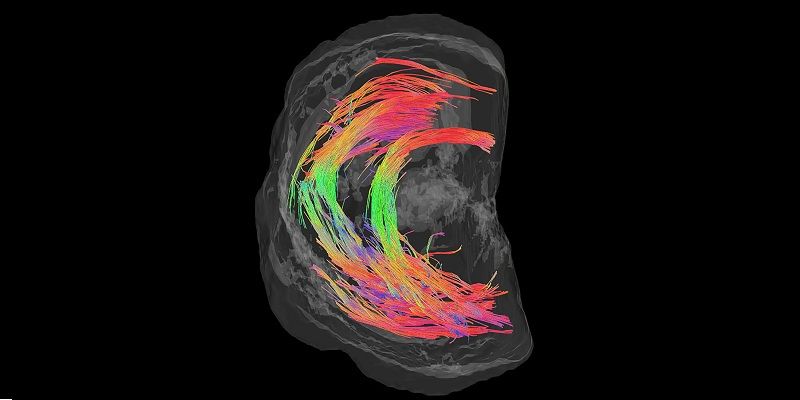
Scientists are using imaging techniques usually used to map the brain to try and understand why some pregnant women miscarry or go into early labour.
They have developed 3D images of the cervix, the load bearing organ which lies at the base of the womb and stops a developing baby from descending into the birth canal before the due date.
Around a quarter of miscarriages during the fourth to sixth month of pregnancy (mid-trimester) occur because of weaknesses in the cervix.
The researchers at the University of Leeds hope by developing a detailed understanding of its structure, they can develop ways of monitoring women for signs of potential problems before they become pregnant.
Mr Nigel Simpson, Associate Professor in Obstetrics and Gynaecology, said: “Ultrasound monitoring is used to identify women at risk - where their cervix is unable to support the pregnancy. But little is known about why that problem develops. This research is attempting to answer that question.”
MRI techniques were used to create 3D images of the cervix. This is the first time extremely high resolution imaging has been used to understand the detailed micro-structure of this organ.

Image shows a cross section of the cervix revealing the encircling fibres that give it strength.
The research is published in the international obstetrics and gynaecology journal, BJOG.
James Nott, from the Faculty of Medicine and Health and lead author, said: “A lot of our understanding of the biology of the cervix is rooted in research carried out 50 years ago.
“By applying the imaging techniques that have been used on the brain, we can get a much clearer understanding of the tissue architecture that gives the cervix its unique biomechanical properties.”
The images reveal a fibrous structure running along the upper part of the cervix. The fibres are much more pronounced near to where it joins the womb. The fibres are made of collagen and smooth muscle and form a ring around the upper aspect of the cervical canal.
During pregnancy, these fibres provide a strong supporting barrier – keeping the foetus and amniotic sac in place and preventing micro-organisms from entering the uterus.
The images reveal that these support tissues are less prominent further down the cervix as it joins the birth canal.
During labour, the body releases chemicals which result in the cervix opening and allowing the baby to enter the birth canal.
But there are medical conditions where earlier in the pregnancy, the cervix fails to support the baby, leading to a miscarriage or premature birth.
Mr Simpson said: “This study’s findings have encouraged us to explore new imaging techniques to check the integrity of these fibres before or during pregnancy in order to identify at-risk mums, intervene earlier, and so prevent late pregnancy loss and pre-term birth.”
The study was funded by Cerebra, the charity for children with brain conditions.
The scientists used diffusion tensor MRI, which is a technology that can remotely sense different types of tissue based on their water content.
Further information
Please contact David Lewis in the press office on 0113 343 8059 or d.lewis@leeds.ac.uk